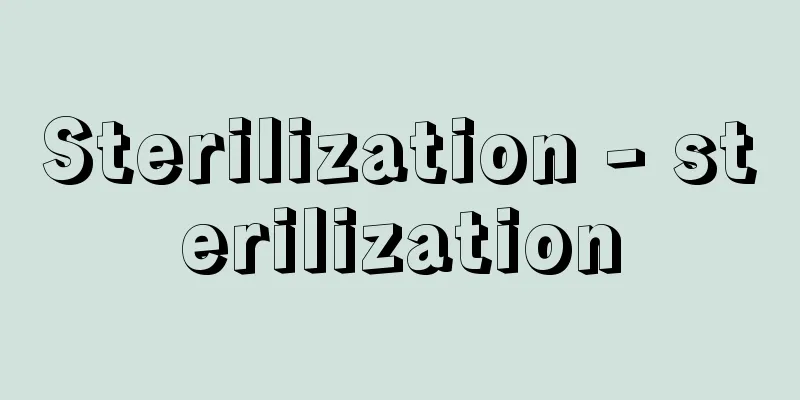Gallia - Gallia (English spelling)

|
Geographically, it refers to the general area inhabited by the people (Celts) whom the ancient Romans called Galli. In particular, after Caesar, it refers to the area surrounded by the Rhine River, the Atlantic Ocean, the Pyrenees Mountains, the Mediterranean Sea, and the Alps, the old Roman province of Gallia Transalpina (Gallia Beyond the Alps), which corresponds to present-day France, Belgium, the Netherlands, and Switzerland. Northern Italy north of the Po River can also be considered to be included in this, as Gallia Cisalpina (Gallia Beyond the Alps). The earliest inhabitants were Ligurians and Iberians in the south, and Celts in other regions, and Celtic culture penetrated deeply between 900 and 500 BC. The Celts also invaded northern Italy, settling in the Po River basin (Cisalpine Gaul). After the Phocaeans advanced to Massalia (Marseille) around 600 BC, Greek culture also spread, and southern Gaul became more active in trade with Rome, and was influenced by Roman culture. The province of Gallia Narbonensis (Transalpine Gaul) was established between 125 and 116 BC, and the Via Domitia was built, as well as the citizen colony of Narbo (Narbonne) in 118 BC. The invasion of the Germanic Cimbri-Teutoni at the end of the 2nd century BC was repelled by the Roman general Marius. Meanwhile, northern Gaul was occupied by Caesar, the prefect of Gaul, during the Gallic Wars of 58-51 BC. During the Roman Empire, Augustus first divided Gaul into Narbonensis (a senatorial province) and three other principal provinces (Lugdunensis, Belgica, and Aquitania), and made Lugdunum (Lyon) the center of governance and worship of Augustus, as well as the location of the provincial council of all of Gaul. There were frequent revolts against Romanization from Emperor Tiberius onwards, but Romanization progressed with the establishment of colonies and the development of road networks, producing many excellent poets and writers, while cities such as Lugdunum, Arelate (Arles), Tolosa (Toulouse), Burdigala (Bordeaux), Kenabum (Orléans), and Lutetia (Paris) flourished, and economic development was remarkable, with the production of wine, grain, foodstuffs, textiles, pottery, metal, and glassware. However, during the reign of Emperor Marcus Aurelius, the region was invaded by Germanic peoples, and chaos and decline began. In 193, Lugdunum fell temporarily, and Germanic invasions continued afterwards, leading to the creation of the "Empire of the Gallics" to defend the borders of the Rhine between 258 (some say 259 or 260) and 273. Then, under Diocletian's reconstruction of the empire, the Province of Gallia (Triel) and the Province of Vienna (Vienna) were created, which were divided into eight and five provinces, respectively. Christianity spread from the 2nd century onwards, but in 177 a great persecution occurred in Vienna and Lugdunum, and persecution of Christians continued in various places afterwards. From 283 onwards, peasant uprisings known as the Bagaudae also occurred, which spread to various places in the first half of the 5th century and continued until the middle of the century. In the 4th century, the Alamanni, Franks and Saxons invaded and destroyed many cities. In 406, the Alans, Vandals and Suebi invaded, followed by the Burgundians, Goths and Huns, and in 418 the Visigothic Kingdom was established in southern Gaul, and in 443 the Burgundian Kingdom was established in the Rhône River basin. By the end of the 5th century, Gaul was completely under the control of the Germanic peoples. [Hasegawa Hirotaka] Source: Shogakukan Encyclopedia Nipponica About Encyclopedia Nipponica Information | Legend |
|
地理的には、古代ローマ人がガリア人Galliとよんでいた人々(ケルト人)の住んでいた地域一般をさす。とくに、カエサル以降、ライン川、大西洋、ピレネー山脈、地中海、アルプスに囲まれた地方、ローマの古い属州ガリア・トランサルピナGallia Transalpina(アルプスのかなたのガリア)をさし、現在のフランス、ベルギー、オランダ、スイスにあたる。なお、ポー川以北の北イタリアも、ガリア・キサルピナGallia Cisalpina(アルプスのこちらのガリア)として、これに含めて考えることができる。 最古の住民は、南部はリグリア人、イベロ人、その他の地方はケルト人であり、ケルト文化は紀元前900年から前500年にかけて深く浸透していく。なおケルト人は北イタリアにも侵入し、ポー川流域に居を占めた(ガリア・キサルピナ)。また前600年ごろマッサリア(マルセイユ)へフォカイア人が進出したのちはギリシア文化も広まり、さらに南ガリアはローマとの商取引も盛んとなり、ローマ文化の影響を受け、前125~前116年には属州ガリア・ナルボネンシスGallia Narbonensis(ガリア・トランサルピナ)が設けられ、ドミティア街道や、前118年には市民植民市ナルボ(ナルボンヌ)がつくられた。なお前2世紀末のゲルマン系のキンブリ・テウトニ人の侵入は、ローマの将軍マリウスによって撃退された。一方、北ガリアは、前58~前51年のガリア戦争によって、ガリアの地方長官カエサルに占領された。 ローマ帝政期には、まずアウグストゥスがガリアをナルボネンシス(元老院属州)のほかに三つの元首属州(ルグドネンシス、ベルギカ、アクィタニア)に分け、ルグドゥヌム(リヨン)を統治およびアウグストゥス礼拝の中心地としたうえ、全ガリアの属州会議の開催地とした。ローマ化に対してティベリウス帝以降たびたびの蜂起(ほうき)がみられたが、植民市の設置、道路網の整備などローマ化が進められ、優れた詩人、文学者を輩出する一方、ルグドゥヌム、アレラテ(アルル)、トロサ(トゥールーズ)、ブルディガラ(ボルドー)、ケナブム(オルレアン)、ルテティア(パリ)などの町が栄え、ぶどう酒、穀物、食料品、織物、陶器、金属、ガラス器具の生産など経済発展も目覚ましかった。しかし、マルクス・アウレリウス帝のとき、ゲルマン人の侵入を被り、混乱、衰退が始まる。193年には一時ルグドゥヌムが落ち、その後もゲルマン人の侵入が続き、258年(259、260年説もある)~273年には、ライン川国境防衛のため「ガリア人の帝国」が設けられた。ついでディオクレティアヌスの帝国再建築のもと、ガリア管区(トリエル)とウィエンナ管区(ウィーン)が設置され、それぞれ8個と5個の属州に分かれた。 2世紀以降キリスト教が普及したが、177年には大迫害がウィエンナとルグドゥヌムで起こり、その後も各地でキリスト教徒の迫害がみられた。また283年以降は、バガウダエとよばれる農民一揆(いっき)も起こり、5世紀前半には各地に広まり、一揆は世紀なかばまで続いた。4世紀にアラマン人、フランク人、ザクセン人が侵入し、多くの都市が破壊された。406年にはアラン人、バンダル人、スエビ人、ついでブルグント人、ゴート人、フン人が侵入し、418年には南ガリアに西ゴート王国が、443年にはローヌ川流域にブルグント王国が成立し、5世紀末にはガリアは完全にゲルマン人の支配下に入った。 [長谷川博隆] 出典 小学館 日本大百科全書(ニッポニカ)日本大百科全書(ニッポニカ)について 情報 | 凡例 |
Recommend
Indian Independence Act
The Indian Independence Act was enacted on July 1...
Solvable group
...In this group, in addition to σ 6 = 1, there a...
Wholesale trade area - Oroshiuri Shoken
...This refers to the spatial and temporal range ...
Old Kitakami River
...The longitudinal valley basin from the foot of...
Sherman Act
…The AT Act is made up of three main statutes: th...
Posthepatic jaundice
…Normal serum bilirubin values are 0.2-0.8 mg/d...
Jointed appendage
This refers to the appendages divided into segment...
White Mountains - White Mountains
A plateau-like mountain range in the United States...
Arriaga, PJde (English spelling) ArriagaPJde
…The cronicas that focus exclusively on culture a...
Linzi Ancient City Site (English: Linzi Ancient City Site)
The ruins of the Qi city in Linzi County, Shandong...
Sarape (English spelling)
A type of men's shawl used mainly in northern ...
canopy
...A dense forest of tall trees at least 4-5m tal...
Yamada Doan
[raw]? [Died] Tensho 1 (1573). A military commande...
Plekhanov, Georgii Valentinovich
Born: December 11, 1856 in Gudalovka [Died] May 30...
City-state (English spelling)
A human association or organization in which a ci...

![Muikamachi [town] - Muikamachi](/upload/images/67ccf9afe2728.webp)







